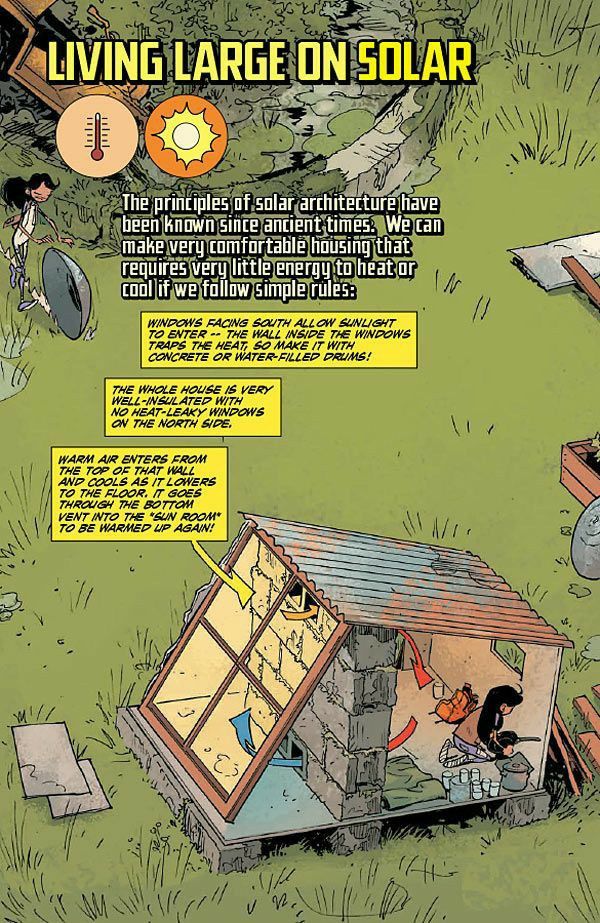From sunrooms to smart insulation, solar architecture offers a timeless, low-energy path to comfort—proving that the future of housing may lie in ancient design principles.
As the global climate crisis deepens, the search for sustainable housing solutions has taken us back to where it all began: the sun. Long before the invention of air conditioners or electric heaters, civilizations relied on the natural energy of sunlight to heat, cool, and ventilate their homes. Today, this age-old knowledge, now refined as solar architecture, is emerging as a powerful strategy for building energy-efficient, eco-friendly housing.
The philosophy is simple yet revolutionary: design buildings in a way that captures, stores, and redistributes solar energy, reducing the need for artificial heating and cooling. As this concept makes its way back into modern design, homeowners are rediscovering that living large doesn’t have to mean wasting energy.
🏡 The Principles of Solar Architecture
☀️ Sun-Oriented Design
The first principle is orientation. Homes designed with south-facing windows maximize solar gain in the northern hemisphere. These windows act like giant solar collectors, letting in direct sunlight during the day. Behind the glass, walls built with concrete or water-filled drums trap the heat, releasing it slowly into the living space as temperatures drop.
This thermal storage creates a natural heating system, keeping rooms warm long after the sun has set—without burning a single unit of fossil fuel.
🧱 Insulation and Placement
Another key rule is insulation and window placement. The northern side of the house, typically the coldest and least exposed to sunlight, is kept well-insulated with minimal or no heat-leaky windows. By contrast, the southern side becomes a dynamic zone of light, warmth, and natural ventilation.
🌬️ Air Circulation
Airflow is carefully engineered. Warm air rises from the sun-exposed wall and, as it cools, it sinks toward the floor. Vents at the bottom direct this cooled air back into a sunroom or solar wall, where it can be reheated. This continuous cycle functions as a natural thermostat, balancing indoor temperatures without the need for fans or air conditioners.
🔄 How It Works in Practice
Imagine sitting in a small house with a glass-covered front wall facing the winter sun. As rays penetrate the glass, the thermal mass wall inside absorbs the energy. Over time, this wall radiates warmth into the living space.
Meanwhile, the air circulation system ensures that cold air doesn’t pool uncomfortably at floor level. Instead, it is recycled back through the sunroom to be reheated.
In summer, careful shading and ventilation allow the system to reverse, expelling excess heat and maintaining a cool, comfortable interior. The result is a home that feels naturally warm in winter and refreshingly cool in summer—without excessive reliance on artificial systems.
🏛️ A Design Rooted in Ancient Practices
Though it feels cutting-edge, solar architecture is far from new. Ancient Greek and Roman homes were often oriented toward the sun, with courtyards and atriums that captured heat. Indigenous communities around the world designed earth-sheltered homes that used soil as insulation while positioning openings for optimal sunlight.
Today, this ancient wisdom is supported by modern science, proving that nature had it right all along.
⚡ Why Solar Architecture Matters Today
The return to solar design principles is not just about comfort—it’s about survival. Buildings account for nearly 40% of global energy consumption, much of it spent on heating and cooling. By incorporating solar architecture, we can drastically reduce energy demand, lower utility bills, and cut carbon emissions.
Moreover, as renewable energy sources like solar panels and wind power become mainstream, homes designed for passive solar efficiency amplify their impact. A house that uses less energy to begin with makes renewable power go much further.
🌱 Real-World Benefits
- Energy Savings
Homeowners report up to 70% reductions in heating costs by using passive solar design. - Comfort Without Compromise
Unlike mechanical systems that blow hot or cold air in bursts, solar design creates steady, even temperatures. - Resilience in Crises
In the face of blackouts, fuel shortages, or extreme weather, solar homes remain habitable, relying on the sun’s consistent energy. - Low Maintenance
With fewer mechanical parts, solar architecture requires less upkeep and fewer repairs over time. - Environmental Impact
Every solar-designed home reduces carbon output, contributing to a global effort against climate change.
🌞 Modern Innovations Inspired by the Past
Contemporary architects are reinventing solar architecture with modern twists. Some homes now combine passive solar design with photovoltaic panels, storing both heat and electricity. Others integrate smart home technology that tracks sunlight and automatically adjusts blinds or vents.
Materials, too, have evolved. Instead of stone and mud bricks, designers use phase-change materials that absorb and release heat more efficiently. Glass technology has advanced, offering low-emissivity coatings that let in sunlight while minimizing heat loss.
The core principle remains unchanged: work with the sun, not against it.
🔮 The Future of Solar Housing
As urban populations grow, cities are exploring ways to integrate solar principles into apartments, offices, and community centers. Green roofs, vertical gardens, and solar facades are becoming part of sustainable urban planning.
Governments are also taking note. Policies that encourage solar architecture, from building orientation codes to tax incentives for energy-efficient design, are shaping a new wave of climate-conscious construction.
In the coming decades, solar architecture could move from being an eco-friendly niche to the default way we build homes.
📜 Conclusion
Solar architecture proves that sometimes the best solutions are also the simplest. By capturing the sun’s free, abundant energy and combining it with thoughtful design, we can create homes that are not only sustainable but also deeply comfortable.
As we face the challenges of climate change and rising energy demands, this ancient yet modern approach offers hope. With glass walls, sunrooms, and natural airflows, homes of the future might not need to consume vast amounts of energy at all—they’ll simply live large on solar.
